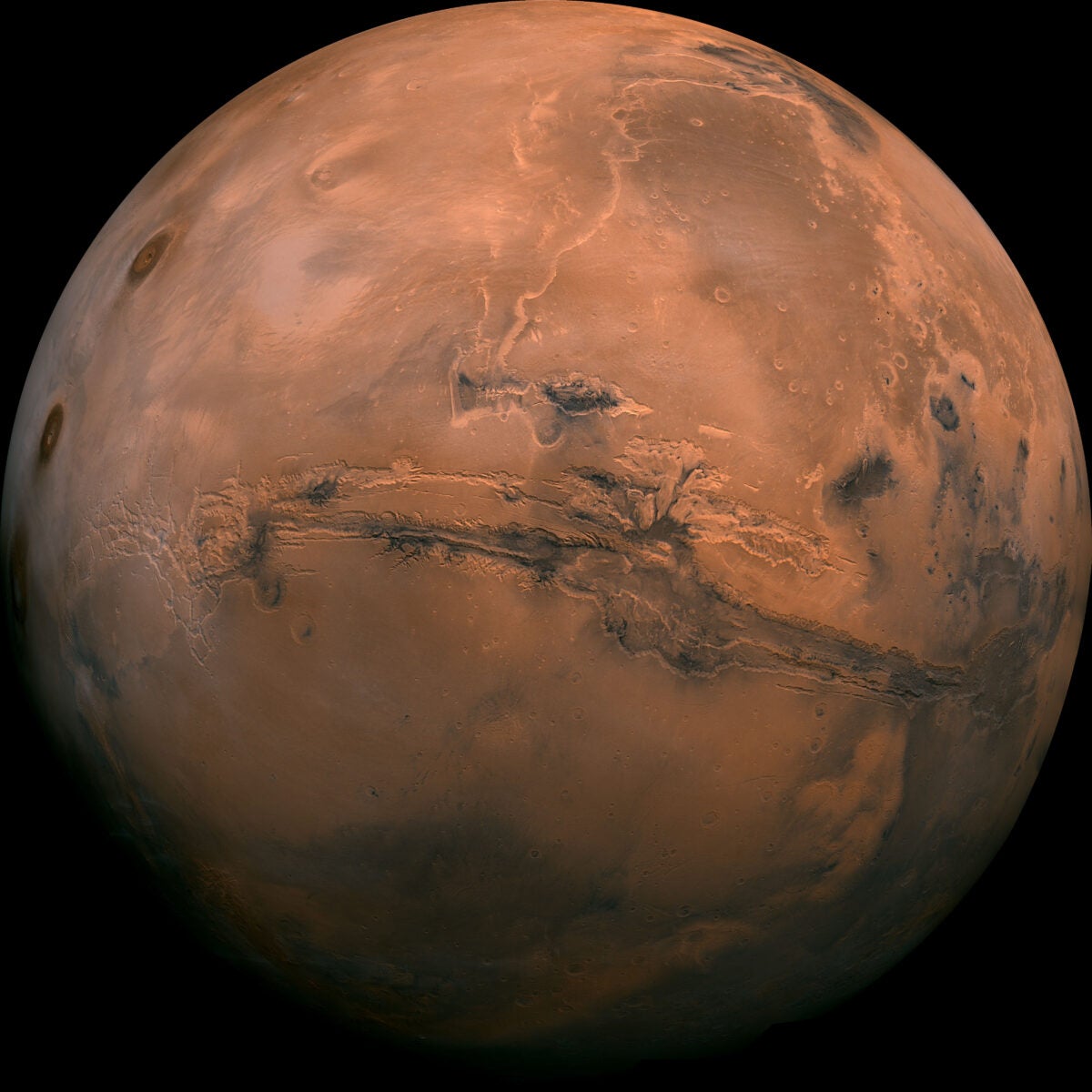
I’ve read that Moon-walking Apollo astronauts said lunar dust on their space suits smelled like spent firecrackers. When humans go to Mars, do we have any idea what Mars dust might smell like?
David Reynolds,
Lebanon, Tennessee
Our best guess from the Mars Global Surveyor Thermal Emission Spectrometer (TES) data is that martian dust is fine-grained material (less than 10 microns across), mostly composed of silicate minerals. These are the minerals that make up most rocks on Earth. The TES spectra show an infrared absorption band that matches the mineral plagioclase, which is commonly found in volcanic rocks.
Overall, we can match the TES spectra with ground-up basalt, the type of lava found on Earth’s ocean floor, in Hawaii, Iceland, and some places on the continents. Recent analysis of TES data shows the presence of very small amounts of carbonates — minerals that form from the interaction of rock with water. Analysis of soil from the Viking, Pathfinder, and now the Mars Exploration Rover sites reveals the presence of large amounts of sulfur (5 to 10 percent), but we don’t know yet what mineral the sulfur is in.
Unfortunately, none of this helps much with the question of smell. Very small amounts of highly aromatic molecules typically cause odors, and we don’t yet have the ability to detect them in the martian soil.
Phil Christensen,
Arizona State University









